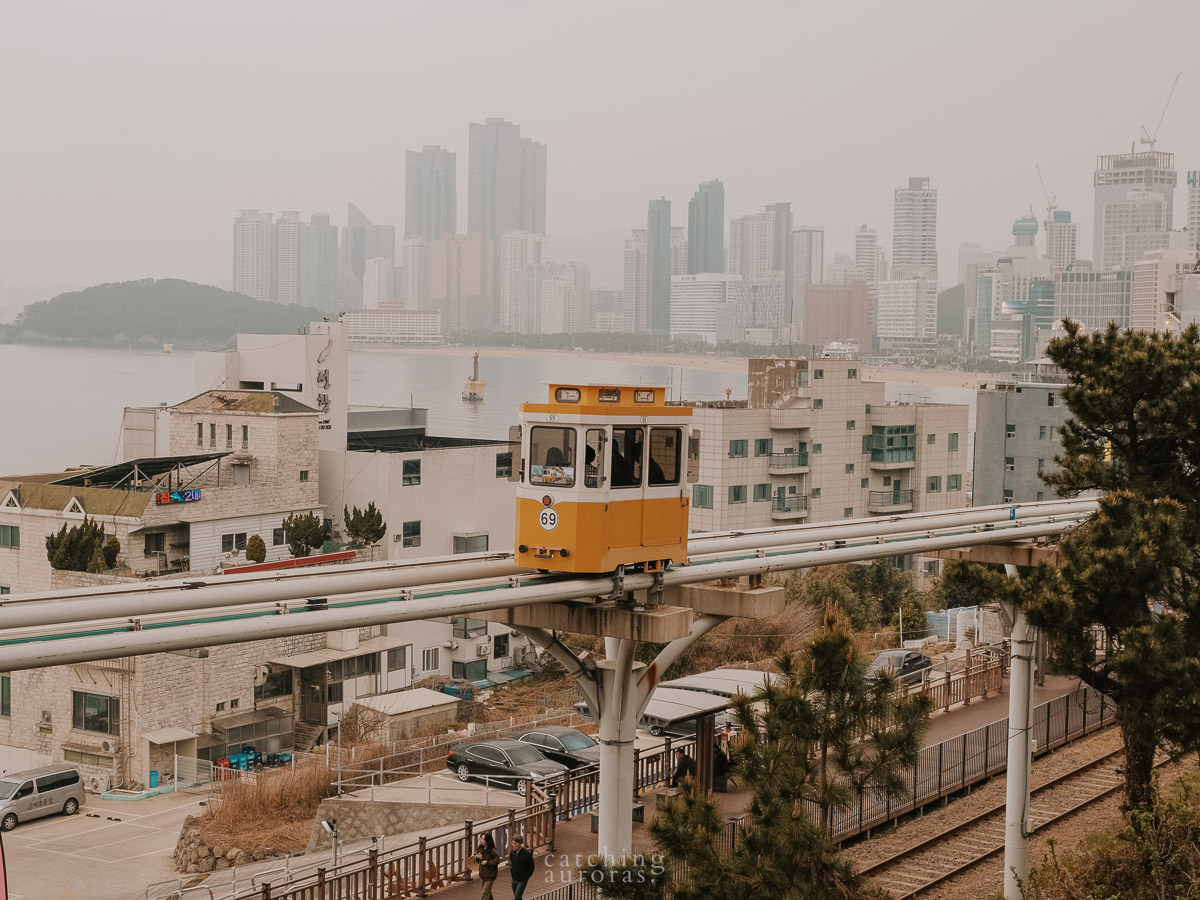Welcome to
South Korea
South Korea Travel Guide
South Korea is a unique blend of ancient traditions and cutting-edge modernity, and no trip to this vibrant country is complete without experiencing the unique charm of its top destinations: Seoul, Busan, and Jeju Island.
Seoul, the bustling capital, is a city where centuries-old palaces like Gyeongbokgung sit gracefully beside futuristic skyscrapers. Wander through the lively streets of Hongdae or the luxury boutiques of Gangnam, and shop your heart out in Myeongdong shopping street.
Head south to Busan, Korea’s laid-back coastal gem. Stroll through the colorful alleys of Gamcheon Culture Village, relax at Haeundae Beach, or ride the cute sky capsules overlooking the ocean.
Then there’s Jeju Island, Korea’s natural wonder. This volcanic island is a haven for nature lovers, featuring dramatic cliffs, pristine waterfalls, lava tubes, and the iconic Hallasan mountain.

- Spring (March–May):
- Average Temperatures: 10°C to 20°C
- Crowd Level: Moderate to High
- It’s cherry blossom season in Korea! Perfect time to attend a lot of flower festivals throughout the country.
- Summer (June–August):
- Average Temperatures: 23°C to 30°C
- Crowd Level: High
- It’s beach season: crowd levels maybe high due to school holidays—brace for hot, humid skies and monsoon showers.
- Autumn (September–November):
- Average Temperatures: 11°C to 25°C
- Crowd Level: Moderate
- Vibrant fall foliage and moderate crowds make this the perfect time to visit Korea.
- Winter (December–February):
- Average Temperatures: -6°C to 5°C
- Crowd Level: Low to Moderate
- Great time to explore Seoul’s museums, cozy cafés, and spas without the rush.
South Korea’s official currency is the South Korean won (₩ or KRW). Here’s the approximate conversions at the time of writing this article:
- 1 KRW ≈ ₹0.063 INR
- 1 KRW ≈ $0.00072 USD
Or, to put it in travel‑friendly terms:
- ₩10,000 ≈ ₹630
- ₩10,000 ≈ $7.20
South Korea is widely regarded as one of the safest countries in the world for travellers—including solo female travelers. Violent crime is rare, and locals are generally respectful and helpful, even in busy cities like Seoul and Busan. Public transportation is clean, efficient, and well-lit at night, and it’s common to see people walking alone late into the evening. While petty theft is uncommon, it’s still smart to stay aware in crowded markets and tourist hotspots. As with any destination, trust your instincts, keep emergency contacts handy, and you’ll likely find Korea both welcoming and worry-free.
A note on racism: In my personal experience, Korean society places significant emphasis on physical appearance—particularly skin fairness and conventional beauty standards. This can sometimes translate into subtle social preferences toward individuals who align with those ideals. It’s also worth noting that some Indian travellers, may occasionally encounter mild racial bias, especially from older generations. I have had some disturbing encounters in Seoul Metro which have stuck with me till today.
Places to Visit in South Korea
All Posts for South Korea
FAQs about South Korea
What language is spoken in South Korea?
The official language is Korean, and while English is taught in schools, it’s not widely spoken outside major tourist areas—translation apps like Papago and Google Translate can be a lifesaver.
Do I need a visa to visit South Korea?
Visa requirements depend on your nationality; Indians need a visa, while U.S. citizens can visit visa-free for up to 90 days.
Is South Korea safe for solo travelers?
Yes, South Korea is considered very safe, with low crime rates and excellent public transport—solo female travellers can explore with confidence.
What’s the best way to get around in South Korea?
Public transport is efficient and affordable—subways, buses, and high-speed trains (KTX) connect most major cities with ease. Taxi apps like Kakao T and Uber come in really handy.
What currency is used in South Korea?
South Korea uses the Korean Won (KRW)—credit cards are widely accepted, but it’s good to carry some cash for street food, taxis and local markets.
